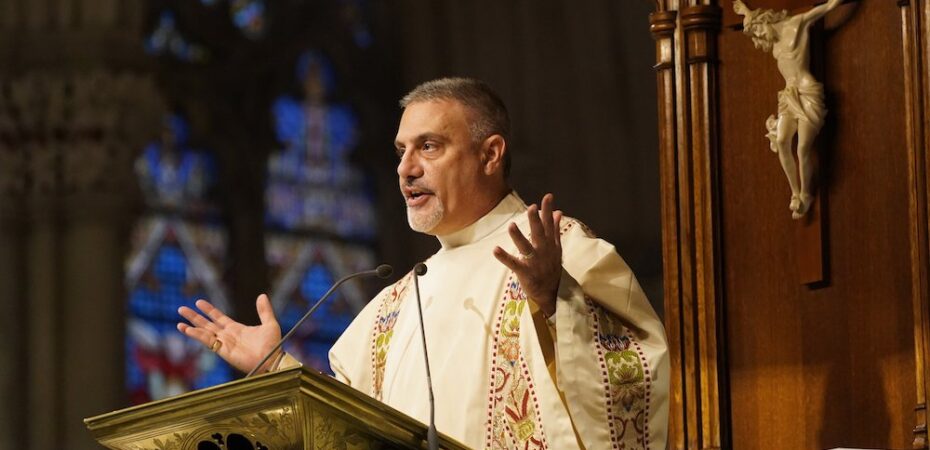Deacons and the Orans Posture
Let us follow the teaching of our bishops
Deacon Harold Burke-Sivers Comments Off on Deacons and the Orans Posture
We have all seen brother deacons who are about to proclaim the Gospel open their arms and say, “The Lord be with you.” Others keep their hands folded. Is there a correct bodily posture?
The opening of the arms in prayer is called the orans posture (orans is a form of the Latin word for prayer). This is an ancient prayer position with roots extending back to the Roman catacombs. The walls depicted images of worshippers with their arms extended while praying for the deceased. In the last 30 years, the orans style of praying has become very popular, particularly among members of the charismatic renewal.
The orans posture, legitimately used in private prayer, has now worked its way into the Mass, which is the Church’s public prayer. The Mass is not a private or merely human ceremony. The meaning of the actions, symbols and gestures reflect the sacramental character of the Church at prayer. Hence, both the verbal and bodily language we use at Mass should foster and promote unity — not confusion and division — within the worshipping community.
The General Instruction of the Roman Missal (GIRM) does not have a directive regarding the use of the orans posture by the laity at any point during Mass, including the Our Father. The only posture specified for the congregation at the Lord’s Prayer is standing. The GIRM says nothing whatsoever about what people are to do with their hands. In 2003, when asked about the use of the orans posture, the United States Bishop’s Committee on Divine Worship stated, “No position is prescribed … for an assembly gesture during the Lord’s Prayer.” The GIRM further adds, “For the sake of uniformity in gestures and bodily postures during one and the same celebration, the faithful should follow the instructions which the deacon, a lay minister, or the priest gives, according to what is laid down in the Missal” (No. 43). Therefore, priests and deacons should not encourage the lay faithful to assume a posture at Mass that is not prescribed in the rubrics, including the orans posture, holding hands and extending hands in blessing.
The liturgical use of the orans position by the priest is spelled out in the rubrics. When the priest uses this position, he is praying on behalf of the people, acting in persona Christi (“the person of Christ”) as the shepherd of the flock. Before the Second Vatican Council, the Lord’s Prayer was said only by the priest. Since Vatican II, participants at Mass are instructed to pray the words of the Our Father with the priest, not imitate his gestures.
Additionally, there are no liturgical rubrics directing the use of the orans posture by deacons. Hence, the deacon, who assists the priest at the altar, is never to assume the orans posture at Mass. In Article 6 of On Certain Questions Regarding the Collaboration of the Non-Ordained Faithful in the Sacred Ministry of Priest, it says: “Neither may deacons or non-ordained members of the faithful use gestures or actions which are proper to the same priest celebrant” (No. 2). Redemptionis Sacramentum further states, “Let all deacons, then, do their part so that the Sacred Liturgy will be celebrated according to the norms of the duly approved liturgical books” (No. 35).
In the Book of Blessings, there are numerous places where the rubrics state, “A minister who is a priest or deacon says the prayer of blessing with hands outstretched; a lay minister says the prayer with hands joined” (Nos. 673, 868, 957, etc.), but it never instructs deacons to assume an orans posture.
Brothers, regarding the orans posture, let us, in a spirit of humility, follow the teaching of our bishops, “The Church sees in these common postures and gestures both a symbol of the unity of those who have come together to worship and also a means of fostering that unity. We are not free to change these postures to suit our own individual piety, for the Church makes it clear that our unity of posture and gesture is an expression of our participation in the one Body formed by the baptized with Christ, our head” (“Praying with Body, Mind, and Voice,” 2010).
DEACON HAROLD BURKE-SIVERS serves at Immaculate Heart of Mary Catholic Church in Portland, Oregon.





